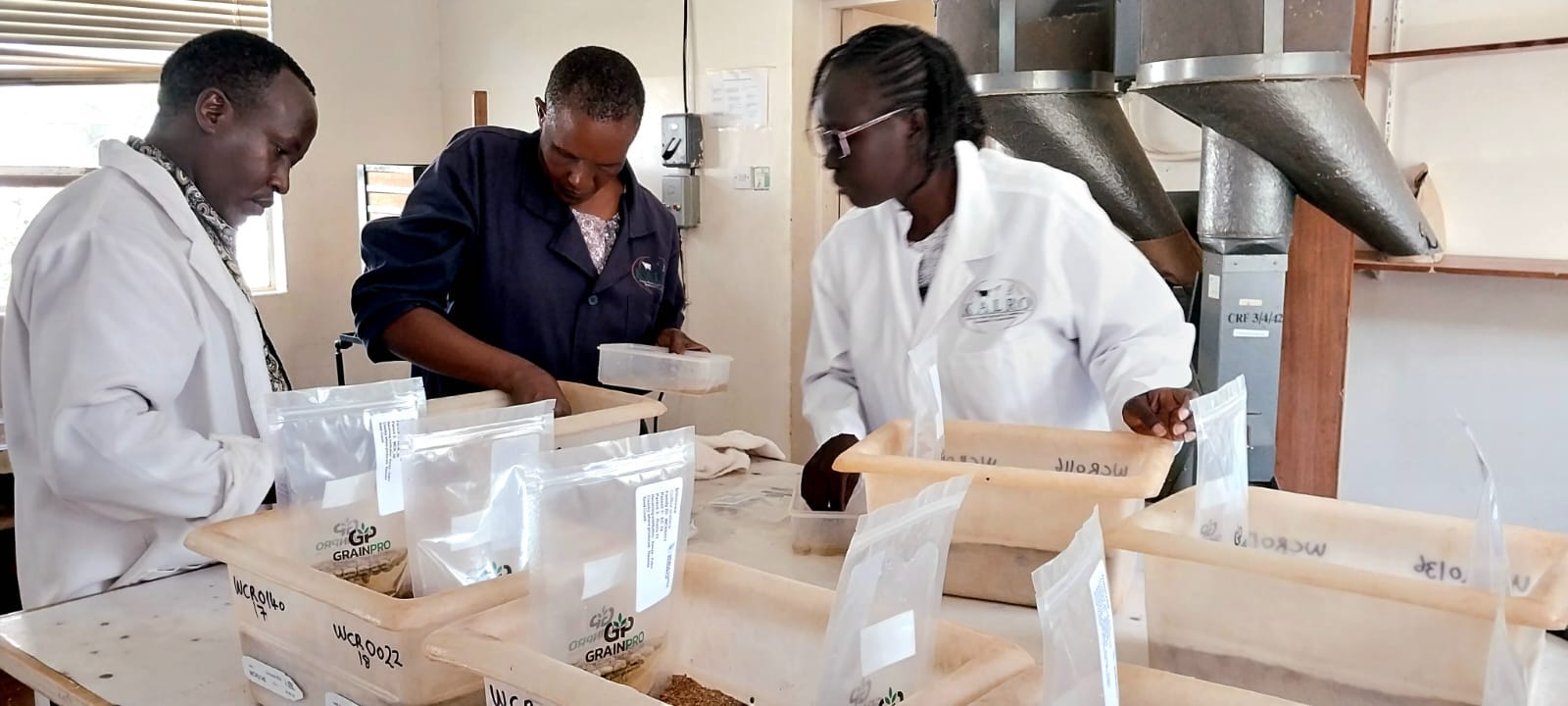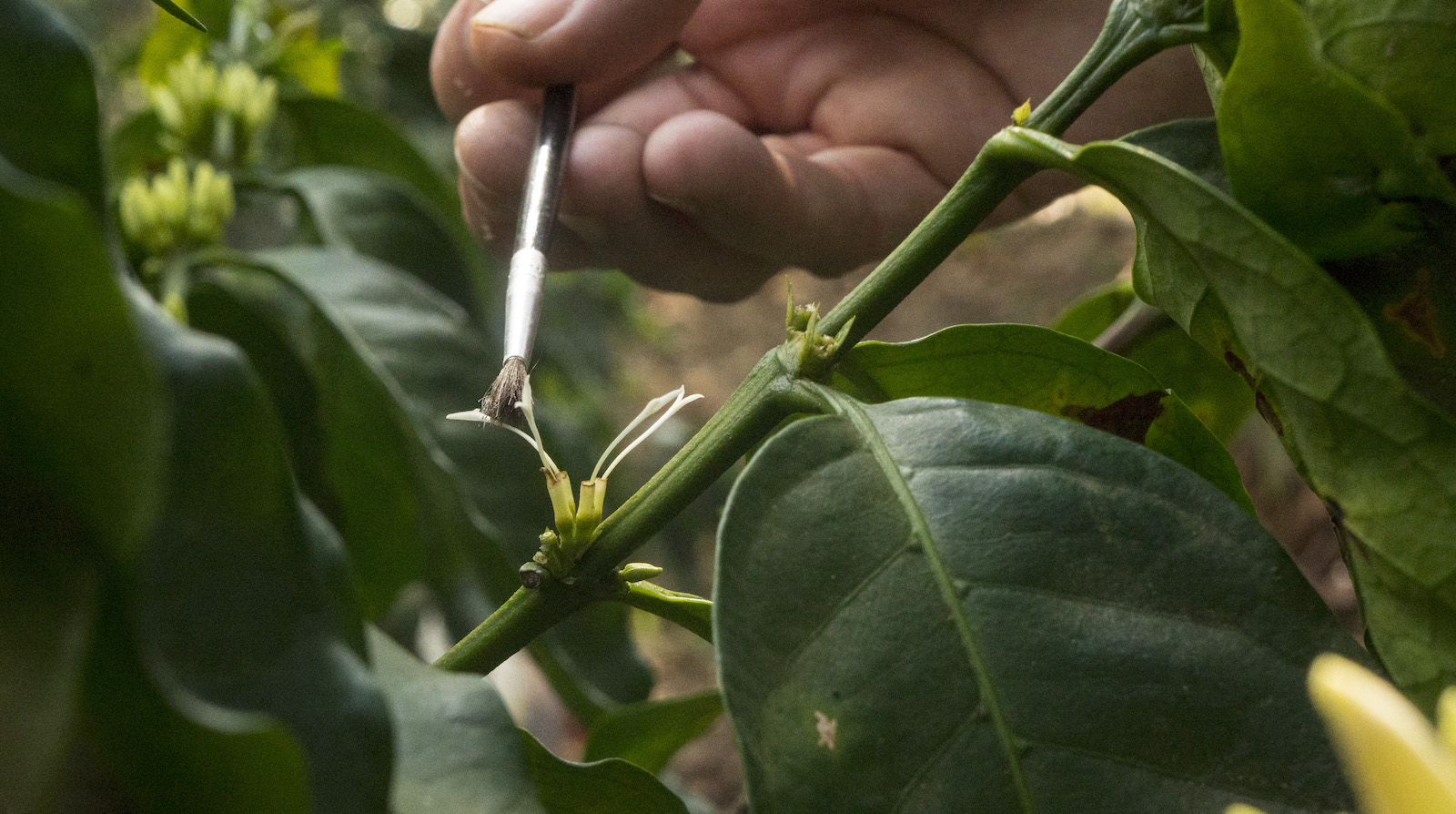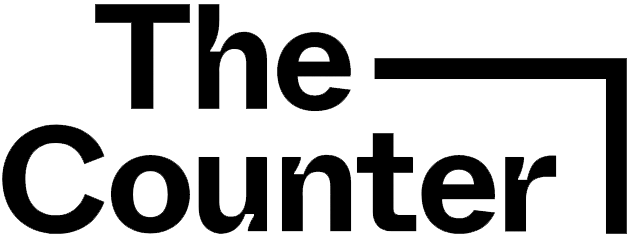David Ngibuini is a second-generation coffee farmer in Kenya’s central highlands, an area of cool temperatures and rich volcanic soil that’s long been one of the best places to grow coffee on Earth. On an afternoon in May, after a couple of months of rain, his 11-acre plot is lush. Six thousand trees — nearly all of them varieties of Coffea arabica, the most widely consumed and best-tasting coffee species — sit in neatly planted rows, their waxy, deep green leaves shimmering in the sun. Workers sort a pile of freshly-picked cherries — the red fruit that contains the beans that will be fermented, dried, and shipped to roasters around the world.
The vigor of this year’s harvest masks a deeper, existential struggle. Arabica coffee, which has been farmed in Kenya since the 19th century, is especially vulnerable to climate change. One 2022 study, from the Zurich University of Applied Sciences, projects the amount of land most suitable to growing it will fall more than 50 percent by 2050.
Ngibuini’s farm, Maguta Estate, is already feeling the impact. Rising temperatures have inhibited the growth of cherries and made trees more vulnerable to diseases and pests. Rains, which used to come reliably twice a year, are increasingly erratic, which leads to wide swings in volume and quality. In his best year, spanning 2020 and 2021, Ngibuini processed nearly 50,000 pounds of beans, sourced from his farm as well as others in the area. The next year, following a prolonged drought, output was down almost 80 percent.
“We didn’t even have a major pest attack,” he said. “The drop was just because of the climate.”

As coffee’s precarity is rising, so is demand: According to some estimates, global consumption, currently 2.3 billion cups per day, could double by mid-century. The projected supply gap has left the industry scrambling for possible fixes, including non-arabica coffee species and caffeine-infused alternatives made from substances like chickpeas and date seeds.
For coffee purists, though, and millions of farming families like Ngibuini’s, the most promising solution might be a newfound push to improve adaptability, and yields, of arabica itself. That’s the idea behind Innovea, a new project led by the nonprofit World Coffee Research, that seeks to supercharge the breeding of improved arabica varieties — unique variations of a given species that have been selected for certain characteristics. In an industry that has long neglected to fund research and development, Innovea, a collaboration with government-affiliated research institutions in nine partner countries, including Kenya, is widely considered to be the most sweeping coffee breeding initiative in decades.
According to Vern Long, CEO of World Coffee Research, or WCR, which is based in the United States and funded by the coffee industry, new varieties are one of the best ways to “improve a crop’s productivity and reduce risk.” Innovea’s goal, she said, is to develop trees that are optimized for a range of production environments — and ultimately give farmers more climate-resilient options.
Although nearly every commodity faces threats from a warming climate, arabica is especially picky. Its trees perform best in areas with moderate rainfall and temperatures that stay between 59 and 82 degrees Fahrenheit. This typically means regions of the tropics at least 3,000 feet above sea level; Ngibuini’s farm near Mount Kenya, Africa’s second-highest peak, sits at a cool 5,700. As temperatures warm, many expect cultivation to shift to even higher altitudes. This, however, has its limits. “The higher up you go, the less land there is available,” said Roman Grüter, an environmental scientist who led the Zurich University of Applied Sciences study. Farmers shifting upwards, he added, are more likely to encounter slopes that are too steep, or protected conservation areas.
Arabica is so fragile in part because its gene pool is surprisingly narrow. The 58 varieties that are widely grown today are all derived from a subset of wild forest coffee native to Ethiopia, which was brought by Arab traders to Yemen in the 15th century and later spread by European colonizers across Asia, Africa, and Latin America. Because it is a slow-maturing tree crop, new variety development, which involves breeding over several generations, can take decades. Coffee R&D, like much crop innovation, is largely state financed — and in the low- and middle-income countries where arabica is grown, governments are often strapped for cash. While Brazil and Colombia, the two largest arabica producers, have a history of strong government support for coffee research, many of their counterparts have long lacked sufficient resources for variety development. A study commissioned by WCR in 2023 estimates that just $115 million is invested in coffee R&D each year, less than one-tenth of one percent of coffee’s $200 billion retail value.
“If you’re a low-income country, and you need to pay for roads and clinics and teacher’s salaries, there’s a strong pull to put revenue from coffee into those things instead of research,” Long said.
For much of coffee’s history, the importers, roasters, and retailers of the rich world haven’t put much money into crop improvement either: As long as they had a reliable supply of beans, they didn’t have to. A wakeup call came in 2012, when shifts in temperature and rainfall linked to climate change triggered an outbreak of coffee leaf rust, a debilitating fungus, that would affect Latin America for years. A group of coffee businesses established WCR that year as a way to facilitate collaborative R&D; the organization today is funded by 177 member companies.
WCR began by conducting a trial of existing varieties, planting 31 of them from around the world in a range of climate zones in 15 countries. It also established a project to develop and trial new “F1 hybrids,” varieties created from genetically distant parents that tend to be higher yielding but are also more expensive to cultivate.

Innovea, which launched in 2022, builds upon both efforts. To start, WCR breeders created 30 novel crosses from 16 parent varieties chosen based on their performance in prior trials. WCR then shipped 5,000 resulting seeds — each of them genetically distinct — to government researchers in Kenya, Rwanda, Uganda, India, Indonesia, Costa Rica, Mexico, Peru, and Hawai‘i. Planting on experimental sites began this year and will continue into 2025.
After six years, when the new trees have matured and produced several harvests of their own, many will have traits that are undesirable, Long said. Some, though, will be “high yielding, disease resistant, and taste good,” and will be moved to further trials or used to make new crosses that could result in even better trait combinations. While the breeding is done using traditional methods, it’s being aided by low-cost genetic sequencing technology, which allows WCR and partner breeders to correlate observed traits with plant DNA and make new crosses faster.
“The idea is to identify the genes we’re looking for and move on with those plants instead of others,” said Jane Cheserek, lead breeder at Kenya’s government-run Coffee Research Institute, WCR’s Kenyan partner.
Innovea is not the only private sector-funded coffee breeding effort: At least two big industry players, Nestlé and Starbucks, have variety-development programs in-house.
What makes Innovea stand out is its scale and its collaborative approach. Although coffee-exporting countries are natural competitors, Long said, partner governments have accepted that it’s in their best interest to cooperate on R&D and allow their genetic material to move across borders. WCR expects to make 100 new pre-commercial varieties available for trials by 2030 and will then work with partner governments to release a subset of those to farmers as soon as 2036. Ultimately, these “finished varieties” will be owned by governments, rather than by WCR or its financial backers.
The effort “amps collaboration up to a new level,” said Stuart McCook, a historian at the University of Guelph in Ontario who studies coffee and other tropical commodities and who is not involved in Innovea. The program, he added, represents the first coffee breeding project of such a global scope since a Portugal-led effort to develop and circulate leaf rust-resistant coffees in the 1960s.

While McCook believes that new variety development is vital to the quest to make coffee more resilient, he and many other experts argue it’s not a panacea. As coffee growing regions warm, he said, innovations in breeding will need to be combined with adaptations in farming practices, like the introduction of “shade trees” — other types of trees to block the sun — and efforts to regenerate depleted soils. Coffee growers around the world, especially at the 12.5 million smallholder farms that produce 60 percent of the world’s supply, will continue to face a global market defined by wild swings in price that at times mean selling harvests for below the cost of production — which in turn makes investing in these adaptations even harder. One 2018 study by the Kenya Coffee Platform, an industry association, estimated that only 49 percent of Kenya’s coffee smallholders earned a “living wage” from the crop. Kenya’s coffee output today is less than half that of its peak in the 1980s, in part because younger generations are turning to more profitable crops, like macadamia nuts or avocados, or selling land to developers. On the outskirts of Nairobi, Kenya’s capital, many areas that once brimmed with arabica have been paved over for housing estates or shopping malls.
Ngibuini, 32, is somewhat insulated from the market’s excesses: he sells most of his beans, which have won awards for quality, to a specialty buyer at a premium. In recent years he’s planted shade trees, which have also boosted soil nutrients and led to improved cherry quality.
What he cannot do, at least for now, is plant the perfect variety of coffee. While he has several on his farm, all of them come with tradeoffs: One Kenya-developed F1 hybrid, for example, which he chose for its disease resistance, struggled more than other varieties in the recent drought. Ideally, he’d plant a variety that could resist the coffee berry borer, a beetle that feasts on coffee cherries, and that would ripen with greater uniformity. The erratic rains, he said, mean cherries are ripening less consistently than ever, which makes harvesting and processing less efficient.
This variety, today, remains hypothetical. Yet in the years ahead, if Innovea lives up to its promise, Ngibuini will have more control over the types of coffee trees he cultivates — so he can better play his part in saving the morning brew for all of us.




